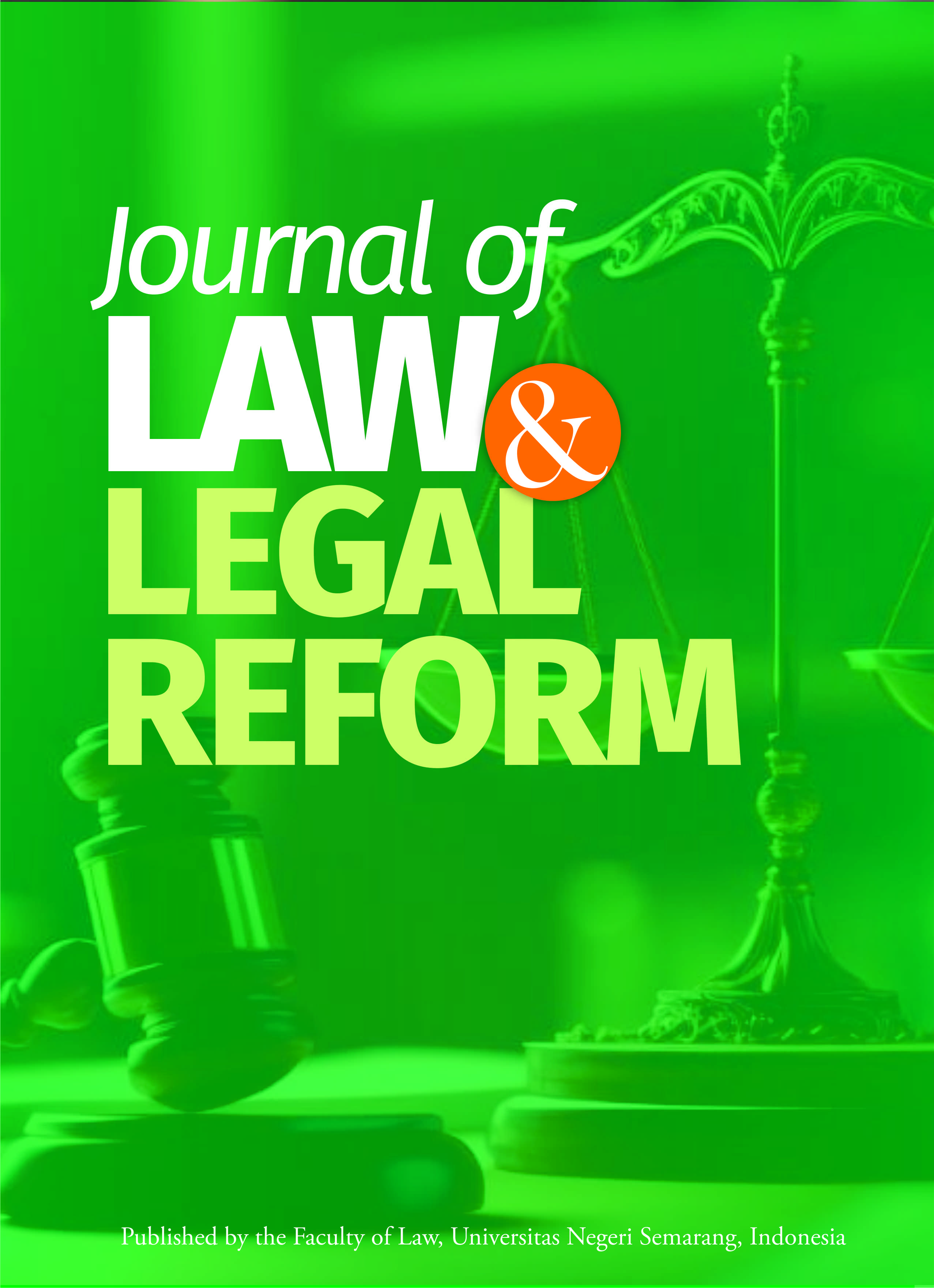Life Below Water of the UN Sustainable Development Framework: An Existing Legal Framework and Potential Threats of Blue Ocean in Nigeria
Main Article Content
Abstract
The paper is an analysis of goal 14 (life below water/targets) of the United Nations’ sustainable development goals 2019 to the development of marine/blue economy towards the attainment of the said goal, existing legal framework and potential threats in Nigeria and the global environment. The threats examined in this paper include: the threat of ocean acidification, the threat of ocean dead zones, the threat of overfishing and the threat of ocean waste in the oceans. The paper adopts an admixture of the doctrinal, historical, comparative, the law and development and empirical approaches. The paper ends with a conclusion and a set of recommendations.
Article Details
All writings published in this journal are personal views of the authors and do not represent the views of this journal and the author's affiliated institutions. Author(s) retain copyrights under a Creative Commons Attribution-NonCommercial-ShareAlike 4.0 International (CC BY-NC-SA 4.0).
References
Aina, E. O. A. (1989). New Direction for Sustainable Development in Nigeria. A paper delivered at the International Workshop on the Environment and Sustainable Development in Nigeria, at the NICONNOGA HILTON Hotel, Abuja, Africa.
Donato, D. C. et al. (2011). Mangroves among the most carbon-rich forests in the tropics. Nature Geoscience, 4(1).
Mabogunje, A. L. (1999.) Nigerian Environment in the New Millennium. Africa.
Nerry, E., & Akpofure, E. (1998). Environmental impact assessment in Nigeria: regulatory background and procedural framework, UNEP EIA Training Resource Manual Case studies from developing countries, Nigeria, Africa.
Omaka, A. (2018). Fundamentals of Maritime, Admiralty and International Water Law. Lagos: Princeton & Associates Publishing Co. Ltd.
Omaka, A. “Green Belt African Initiative”, http://greenbeltafricainitiative 1-org.blogspot.com/
SDGs Policy Brief on Ocean: Marine Pollution, SDG Policy Brief on Global Biodiversity.
Section 4 of the NESREA Act 2007.
Solomon, O., Bankole, P. O., Adeyinka, M. A. (1995). Environmental Statistics: The Situation in Federal Republic of Nigeria, Africa.
UNDP, “Goal 14 Sustainable Development Goals: Life Below Water” http://www.undp.org/content/undp/en/home/sustainable-development-goals/goal-14-life-below-water.html
van Hooidonk, R., Maynard, J. A., Manzello, D. and Planes, S. (2013). Opposite latitudinal gradients in projected ocean acidification and bleaching impacts on coral reefs. Global Change Biology, 20(1), 103-112.
Water Sector Governance in Africa, Vol. 2 Assessment Guidelines. (2010). Water Partnership Program (WPP) of the African Development Bank. Printing Finzi Usines Graphiques. September 2010.
Online Sources
“Alliance for Climate Education”, Video (3:01) https://www.youtube.com/watch?v=Wo-bHt1bOsw, National Geographic: http://ocean.nationalgeographic.com/ocean/critical-issues-ocean-acidification/ Smithsonian Museum: http://ocean.si.edu/ocean-acidification
“Blue Economy Concept Paper”, https://sustainabledevelopment.un.org/content/documents/2978BEconcept.pdf.
“Draft Abu Dhabi Declaration Blue Economy”
“Effects Dead Zones and Harmful Algal Blooms”, https://www.epa.gov/nutrientpollution/effects-dead-zones-and-harmful-algal-blooms
“Genetic Diversity Losing Out”, http://thecaudallure.blogspot.co.uk/2011/07/genetic-diversity-losing-out-to.html,
“Goal 14 SDGs”, http://www.unevironment.org/explore-topics/sustainable-development-goals/why-do-sustainable-development-goals-matter/goal-14.
“IMODOCS” website, at http://docs.imo.org. An extensive compilation of the events leading up to the adoption of the Convention and Protocol, as well as many of the historical documents (meeting reports, etc.), is available on the IMO Maritime Knowledge Centre website.
“IUCN Releases New Guidance Document Ocean Acidification Policy and Governance Options”, https://www.iucn.org/content/iucn-releases-new-guidance-document-ocean-acidification-policy-and-governance-options
“Living Blue Planet Report: Species, habitats and human well-being”, https://wwf.panda.org/wwf_news/?252590/living-blue-planet-report or https://assets.wwf.org.uk/downloads/living_blue_planet_report_2015.pdf, also see http://ocean.panda.org/
“Logistical Note: Blue Economy Summit”,
“National Geographic”, http://education.nationalgeographic.com/encyclopedia/dead-zone/,
“National Geographic”, http://ocean.nationalgeographic.com/ocean/critical-issues-overfishing/
“National Ocean Service”, http://oceanservice.noaa.gov/facts/deadzone.html,
“Ocean Digital Explorer”, http://oceans.digitalexplorer.com/resources/?controller=search,
“SDGs Oceans”, https://www.un.org/sustainabledevelopment/oceans/
“Sustainable Development”, https://www.un.org/sustainabledevelopment/wp-content/uploads/2018/09/14.pdf visited on the 22/04/2020. To find out more about Goal #14 and other Sustainable Development Goals visit: http://www.un.org/sustainabledevelopment
“Teach ocean science”, http://www.teachoceanscience.net/teaching_resources/education_modules/dead_zones/learn_about/
“The Blue Economy and Small States Commonwealth Blue Economy Series, No. 1”, https://www.thecommonwealth-ilibrary.org/commonwealth/industry-and-services/commonwealth-blue-economy-series_25191349
“The blue economy Growth, opportunity and a sustainable ocean economy: An Economist Intelligence Unit”, briefing paper for the World Ocean Summit 2015, see page 7 of the report at https://www.oceanprosperityroadmap.org/wp-content/uploads/2015/05/2.-State-of-the-Blue-Economy_briefing-paper_WOS2015.pdf
“Why Do Sustainable Development Goals Matters?”, UNEP–UN Environment Programme, https://www.Unenvironment.org/explore-topics/sustainable-development-goals/why-do-sustainable-development-goals-matters.
“World Wildlife Fund”, https://www.worldwildlife.org/threats/overfishing
Legal Documents
Act No. 30 of 10th June 1971
Supplement to Official Gazette Extraordinary no.79. Vol.75A. 779
